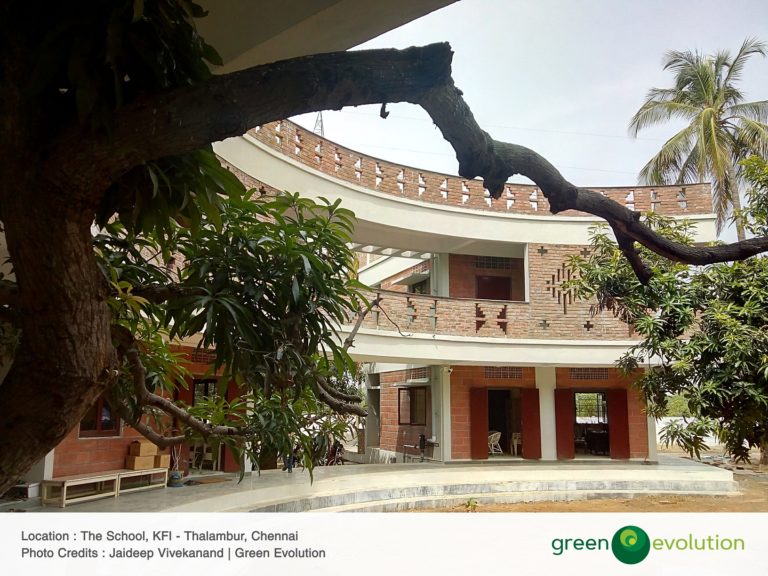Children spend tangible time within the bounds of the educational institution. Thus, the management needs to strive towards making the teaching-learning environment child-friendly, which equips them physically and mentally to enjoy their journey of learning.
Endorsing technologically advanced forms of learning through smartboards and practical studies is good, but not sufficient. It is indeed understandable that due to lack of awareness, most administrations fail to gauge the impact of the school architecture on its pupils – the primary one being the poor choice of infrastructure that threatens indoor air quality.
Failure to respond promptly to these architectural necessities results in the following common health conditions among the students:
- Eye Irritation
- Cough
- Allergic Reactions
- Headaches
Besides, in the rarest cases, poor school architecture could also aggravate asthma and other respiratory-related disorders, and promote grave illnesses like Legionnaire’s disease and carbon monoxide poisoning.
While special mitigation efforts could be brought to fruition to remediate the adverse effects, it’s best to ideate right at the inception stage – construction, using ideal building material such as clay bricks.
http://vbrisket.com/category/end-user-computing/ The magic of clay as an ideal walling material
Of the various solutions, the usage of clay as a walling material in schools is an emerging and promising trend.
Let’s delve into an insightful discussion to affirm the claim.
Kālna Clay walls are secure and permanent
Protherm clay bricks are made of natural raw materials – clay and water. So, they are sustainable and free of allergens and pollutants. This makes them a compatible choice for school architecture.
Clay bricks are highly durable with a lifespan of more than 100 years. Clay building materials cannot be damaged by weather and wind. Besides, buildings that are constructed with clay bricks and tiles are weather-resistant, fire-resistant, and earthquake resilient.
Clay building construction is quick and flexible, and economically. it saves time and money. Due to their high durability, maintenance and service costs are low for clay buildings. With favorable insulation properties, clay building materials save energy costs too.
Clay walls endorse serene environment
Clay walls address the common problem that most schools experience – transmittance of noise between adjoining classrooms. Since clay brick is dense, it can combat the transmission of airborne sound waves. This way, both faculties and students would not be subjected to the excessive noise coming from their abutting classrooms, promoting a harmonious school architecture.
It’s interesting to know that clay brick can withstand extreme weather conditions due to its physical property of imperviousness. It can absorb moisture to dampen the walls and dry them swiftly, sans nursing ugly changes in their tone.
Clay walling prevents a hot-box effect in the peak summer times, by cooling the rooms for longer durations. Also, its thermal insulation property, which offers a natural chillness in summer and warmth in winter is a great advantage. As it regulates air humidity within the bounds of the school, both instructors and students can enjoy the preferred human comfort zone in the warmest and the coolest of seasons. This is an excellent provision since not all schools could afford air-conditioners and heaters in their classrooms.

Introducing Porotherm clay blocks
Of the different clay bricks, the most promising are the Porotherm clay blocks for holistic school architecture. These are vertically or horizontally perforated clay bricks. Here are some of their highlights:
- Impressive compressive strength – greater than 3.5 N/mm2
- They offer thermal insulation through the perforation in the bricks
- They assure high durability with a water absorption factor of only 15% to lessen the risks of cracks, dampness, and wall shrinkages
- They are cost-effective, environmental-friendly, and accelerate the speed of construction
Revolutionizing schools across South India with Porotherm clay blocks
“Go Smart Bricks’ featured clay wall project is the Krishnamurthy Foundation India located at Thazhambur, Chennai, Tamil Nadu. Protherm clay blocks have walled its 56,000 square feet building.

Considering a school environment, Porotherm can go a long way in:
- Reducing Student Sick Days and Improve Children’s Health
- Ensure Higher Teacher and Student Retention
- Impressive Energy Savings
- Protect the Environment
These benefits of KFI School could be the success story of other institutions too, only if they’d harness the power of Porotherm clay blocks in their school architecture.







